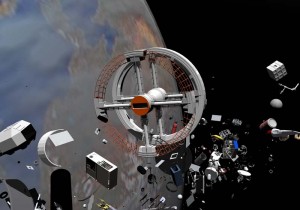In Alaska we understand how forecasting weather is important. But it turns out, in space, it plays a critical role as well. A University of Alaska Fairbanks scientist is helping satellite jockeys avoid collisions.

UAF space physicist Mark Conde has helped develop instruments to measure winds and temperature 100 miles above the Earth. Conde says as rarefied as conditions are that high up, the atmosphere can act like a fluid. Getting accurate readings can be important to NASA and other space agencies. With something like a half-million pieces of space junk circling the Earth, operators want to know how much to shift their satellites to avoid collisions.
“A change in the density of the atmosphere, which would come about from a change in temperature, or a change in the wind will alter where their spacecraft are predicted to be a few days in advance.”
Conde says the higher the latitude, the better positioned the instruments are to accurately gauge conditions. He says one already stands on Alaska’s north coast. So, positioning devices in Antarctica is ideal.
“You can go to McMurdo and be at 78 degrees latitude south, and you can go to the South Pole and be right at the Pole 90 degree latitude. So, it turns out those two places are attractive because of where we expect the dynamic weather to originate from.”
Moreover, he says the instrument headed to McMurdo was built in-house at the Geo-physical’s machine shop. The installation is scheduled for next month close to the height of Antarctica’s summer. Conde or a grad student will travel south to operate the equipment next year.




